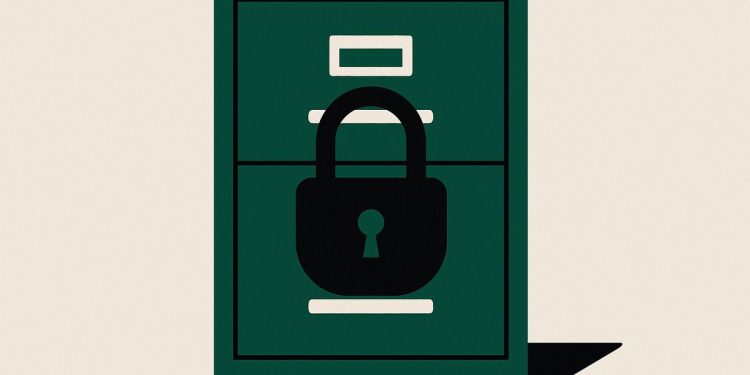To secure AI data, new accounting safeguards are a critical priority for firms deploying chatbots, classification engines, and predictive models. Escalating breach costs and expanding regulations mean every finance team needs a concrete action plan. This blueprint translates industry guidance and lessons from real-world breaches into an actionable roadmap for accountants.
Checklist: How to Secure Your Data When Adopting AI in Accounting
Firms should secure AI across its full lifecycle – plan, build, deploy, and monitor – as urged by international cybersecurity agencies (AI Data Security). Start by documenting all datasets feeding your models, ranking them by confidentiality, and clarifying mandatory controls under regulations like GDPR or CCPA.
- Vendor Due Diligence: Mandate that vendors provide proof of ISO 27001 or SOC 2 Type II certification. Insist on reviewing data-segregation testing reports to verify security claims.
- Strict Procurement Clauses: Embed contractual clauses that grant the right to audit, mandate breach notification within 24 hours, and explicitly prohibit vendors from using your data to train public models.
- Comprehensive Encryption: Implement encryption for data both in transit and at rest. Crucially, verify that encryption keys remain within your firm’s cloud tenancy and are not managed unilaterally by the service provider.
- Role-Based Access Control (RBAC): Grant staff the minimum access required (least-privilege principle). For sensitive work, such as model engineering with production data, implement time-boxed privileges that expire automatically.
- Immutable Logging: Stream all application and inference logs to a write-once, read-many (WORM) archive. This ensures you can reconstruct a chain of events for forensic analysis or regulatory review.
Test, Monitor, and Respond Throughout the Model Lifecycle
Weak data isolation can lead to significant privacy breaches, as seen when Sage Copilot exposed client invoices in January 2025 (Sage Copilot Privacy Incident). To prevent such failures, firms must pressure-test models with synthetic, structurally identical data before deploying them with live financial records.
- Model Explainability: Mandate that every model release passes interpretability tests so human reviewers can detect algorithmic bias or anomalous features before deployment.
- Shadow AI Discovery: Use network scanning to identify unsanctioned AI tools or data uploads. According to IBM’s 2025 breach report, 65% of AI-related leaks involve customer PII duplicated across unauthorized environments (IBM 2025 breach report).
- Continuous Risk Scoring: Align your controls with frameworks like the NIST AI Risk Management Framework (RMF). Continuously update risk scores as datasets evolve or new regulations like the EU AI Act introduce stricter disclosure rules.
- Incident Response Readiness: Prepare an incident response template with pre-approved communications and a current regulator contact list. This enables firm partners to respond to a breach in minutes, not days.
- Staff Skills Training: According to the 2025 Generative AI in Professional Services Report, trained staff can reduce breach costs by nearly $200,000. Conduct quarterly workshops focused on secure AI prompting and proper data classification.
By implementing these safeguards early and maintaining them through disciplined reviews, accounting firms can achieve two critical outcomes. First, auditors receive defensible evidence of regulatory compliance. Second, clients gain confidence that their financial data remains private as automation accelerates.
What are the first steps when vetting an AI vendor for an accounting workflow?
Begin with a vendor due-diligence questionnaire that covers:
– Where client data is stored
– Whether the supplier holds ISO 27001 or SOC 2 certification
– How access is revoked when staff leave
– What audit trails the tool provides
Pair the questionnaire with an internal risk register so you can score each answer and decline vendors that cannot segregate client data or give model-training opt-outs.
Which contract clauses actually stop an AI provider from mis-using accounting data?
Insert language that:
– Confirms “zero retention” for any client-identifiable figures
– Restricts sub-processing without written approval
– Requires 24-hour breach notification
– Adds a “right to audit” the supplier’s cloud estate once a year
Copy exact phrases from the AI and accounting privacy guide instead of starting from scratch.
How should encryption be applied to AI inputs and outputs inside a firm?
Encrypt twice:
– Data in transit via TLS 1.3 between your workstation and the model
– Data at rest with AES-256 inside any object storage the vendor uses
Keep keys in a FIPS-compliant hardware module and rotate them every 90 days; this single step cuts breach costs by roughly $224 000 according to 2025 IBM figures.
What access-control model works best for AI dashboards that show sensitive trial balances?
Adopt role-based access plus “just-in-time” elevation:
– Read-only席位 for junior staff
– Temporary write access granted for four-hour windows for partners
– Segregate duties so the same person cannot upload, approve and export a forecast
Enforce MFA on every login; 97% of AI breaches last year lacked this basic control.
How do you verify that an AI-generated draft report is safe to send to a client?
Build a “four-eyes” checklist:
– One technical reviewer confirms no private identifiers (bank accounts, tax IDs) are in the prompt history
– One qualified CPA validates the numeric logic
– Run the final PDF through a data-loss-prevention scanner that strips hidden metadata
– Log the review decision in your incident-response template so you have an audit trail regulators can see
Firms that skip this double review suffered an average cost of $5.56 million per breach in 2025, far above the cross-industry mean.
















